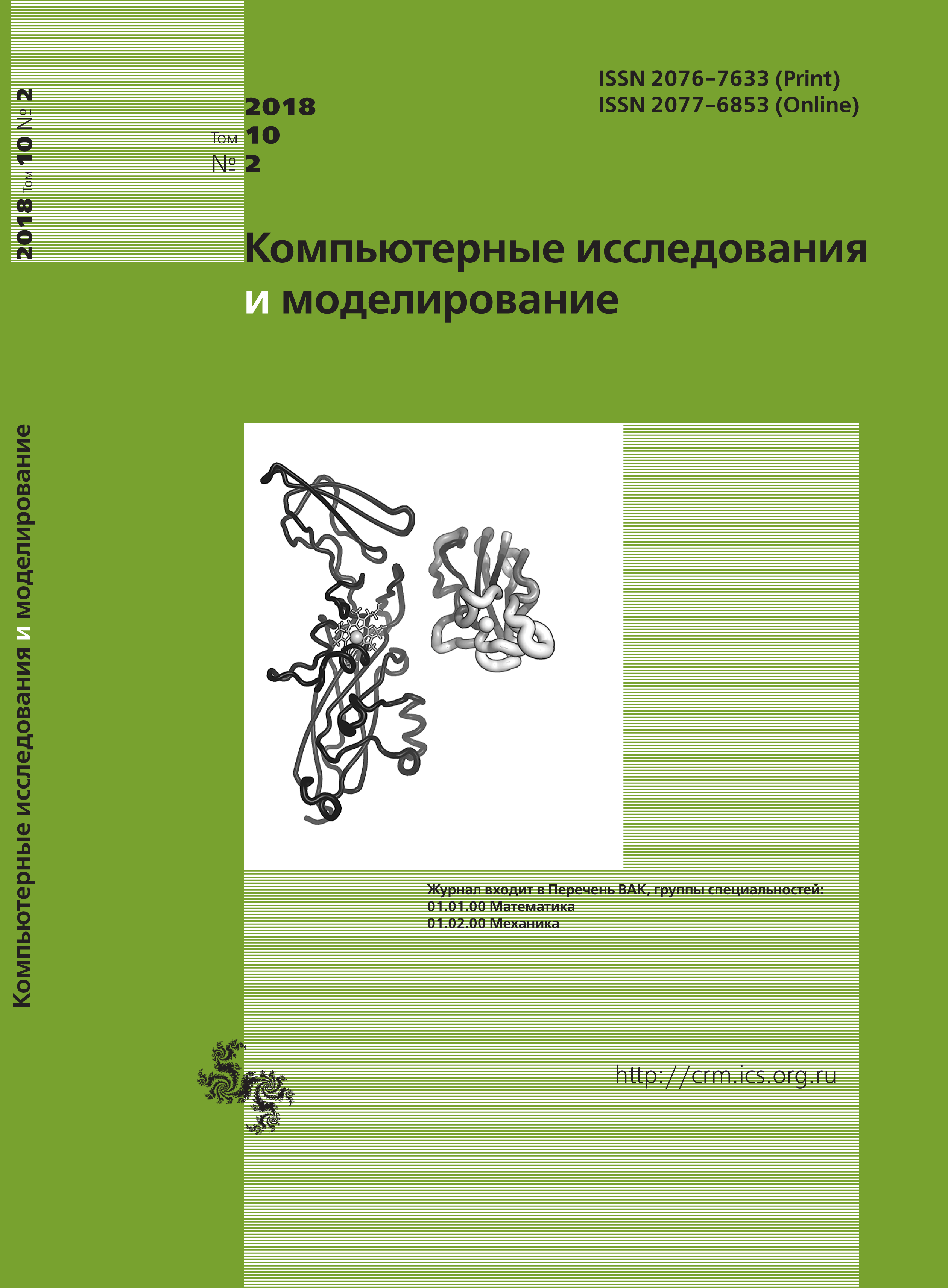All issues
- 2024 Vol. 16
- Issue 1 (special issue)
- 2023 Vol. 15
- 2022 Vol. 14
- 2021 Vol. 13
- 2020 Vol. 12
- 2019 Vol. 11
- 2018 Vol. 10
- 2017 Vol. 9
- 2016 Vol. 8
- 2015 Vol. 7
- 2014 Vol. 6
- 2013 Vol. 5
- 2012 Vol. 4
- 2011 Vol. 3
- 2010 Vol. 2
- 2009 Vol. 1
Repressilator with time-delayed gene expression. Part I. Deterministic description
The repressor is the first genetic regulatory network in synthetic biology, which was artificially constructed in 2000. It is a closed network of three genetic elements — $lacI$, $\lambda cI$ and $tetR$, — which have a natural origin, but are not found in nature in such a combination. The promoter of each of the three genes controls the next cistron via the negative feedback, suppressing the expression of the neighboring gene. In this paper, the nonlinear dynamics of a modified repressilator, which has time delays in all parts of the regulatory network, has been studied for the first time. Delay can be both natural, i.e. arises during the transcription/translation of genes due to the multistage nature of these processes, and artificial, i.e. specially to be introduced into the work of the regulatory network using synthetic biology technologies. It is assumed that the regulation is carried out by proteins being in a dimeric form. The considered repressilator has two more important modifications: the location on the same plasmid of the gene $gfp$, which codes for the fluorescent protein, and also the presence in the system of a DNA sponge. In the paper, the nonlinear dynamics has been considered within the framework of the deterministic description. By applying the method of decomposition into fast and slow motions, the set of nonlinear differential equations with delay on a slow manifold has been obtained. It is shown that there exists a single equilibrium state which loses its stability in an oscillatory manner at certain values of the control parameters. For a symmetric repressilator, in which all three genes are identical, an analytical solution for the neutral Andronov–Hopf bifurcation curve has been obtained. For the general case of an asymmetric repressilator, neutral curves are found numerically. It is shown that the asymmetric repressor generally is more stable, since the system is oriented to the behavior of the most stable element in the network. Nonlinear dynamic regimes arising in a repressilator with increase of the parameters are studied in detail. It was found that there exists a limit cycle corresponding to relaxation oscillations of protein concentrations. In addition to the limit cycle, we found the slow manifold not associated with above cycle. This is the long-lived transitional regime, which reflects the process of long-term synchronization of pulsations in the work of individual genes. The obtained results are compared with the experimental data known from the literature. The place of the model proposed in the present work among other theoretical models of the repressilator is discussed.
Indexed in Scopus
Full-text version of the journal is also available on the web site of the scientific electronic library eLIBRARY.RU
The journal is included in the Russian Science Citation Index
The journal is included in the RSCI
International Interdisciplinary Conference "Mathematics. Computing. Education"







